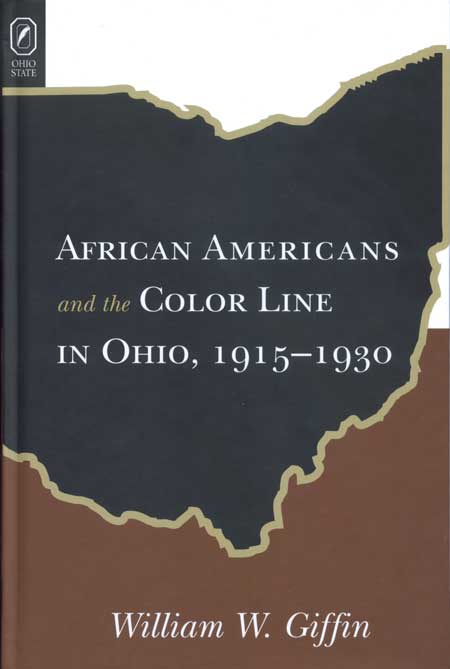African Americans and the Color Line in Ohio, 1915–1930William W. Giffin |
$99.95 cloth 978-0-8142-1003-1
| |||
|
“Giffin fills an essential gap and takes on a crucial, yet little-studied time period in history. Perhaps more important is the depth and quality of his research combined with his important and nuanced arguments about the hardening of the color line in Ohio urban areas between 1915 and 1930. This book will find sizeable and significant audiences for a long time to come.” —James H. Madison, Indiana University “An exhaustive and fascinating study of race and community.” —Kevin J. Mumford, University of Iowa Writing in true social history tradition, William W. Giffin presents a magisterial study of African Americans focusing on times that saw the culmination of trends that were fundamentally important in shaping the twentieth century. While many scholars have examined African Americans in the South and such large cities as New York and Chicago during this time, other important urban areas have been ignored. Ohio, with its large but very different urban centers—notably, Cleveland, Columbus, and Cincinnati—provides Giffin with the wealth of statistical data and qualitative material that he uses to argue that the “color line” in Ohio hardened during this time period as the Great Migration gained force. His data show, too, that the color line varied according to urban area—it hardened progressively as one traveled South in the state. In addition, whereas previous studies have concentrated on activism at the national level through such groups as the NAACP, Giffin shows how African American men and women in Ohio constantly negotiated the color line on a local level, through both resistance and accommodation on a daily and very interpersonal level with whites, other blacks, and people of different ethnic, class, and racial backgrounds. This early grassroots resistance provided the groundwork for the Civil Rights movement that would gain momentum some twenty years later. This analysis of the Ohio color line speaks to those historians who still are inclined to discuss Jim Crow as a wholly southern phenomenon. It indicates that the color line in the North was not uniform and provides further evidence of the importance of locale and local people in African American history. At the same time, it offers stories of inherent interest revealing human conduct at its best and worst. William W. Giffin is professor of history at Indiana State University, Terre Haute. | ||||



